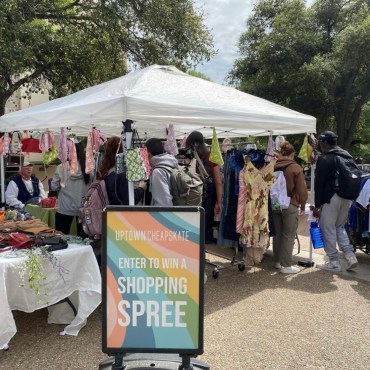Listeners:
Top listeners:
-
play_arrow
KTSW 89.9

By Claire Hansen
Blog Content Contributor
First it was meat, then it was dairy, and now, I’ve been seeing more and more people push for the idea of a grain-free life as well. You’re probably thinking, “No, it couldn’t be…”, but yes, I’m here to investigate a culinary blessing’s true value to us this week. The benefits of eating grains, one of the tastiest, most filling and most versatile food groups, is beginning to surface as something in question. Terrifying, I know, but I’ll explain why, how it all makes sense, and what we should do to make sure we’re getting the right kind.
Since grains are so widely consumed, it’s hard to imagine that they could truly be bad for us, and it’s even harder to imagine a life without them (you mean, no more cereal?). However, the health effects of grains are indeed quite controversial. While the authorities recommend women eat five to six servings of grains per day, and men eat six to eight, other health experts believe we should be cutting them out of our diet as much as possible. There are good arguments for both sides, so this article will take a look at each and come to a logical conclusion based on what we know.
Firstly, grains include corn, rice, wheat, barley, oats, sorghum, millet, rye and several others. Two exceptions to this list are quinoa and buckwheat, which are considered pseudocereals, or foods that are not technically grains, but prepared and consumed very similarly to grains. As an easily processed food, grains are used to make literally everything: breads, pasta, cereals, muesli, oatmeal, tortillas, and of course, pastries and cookies as well. I won’t even begin to go into detail about how many processed foods they’re a part of.
The main difference between a healthy grain and a not-so-healthy grain is whether or not it is whole or refined. Now, I’m going to get a little scientific here. A whole grain contains all three of its main parts: the bran, the germ, and the endosperm. I could take the time to explain what each of these are, but the bottom line is that you want to have all of them. In refined grains, the bran and the germ are removed, leaving a nutrient-poor, empty-calorie snack. Seems pretty simple, right? Well, there are actually many “whole grain” labels out there that claim to contain whole grains but really contain a pulverized version, such as processed breakfast cereals like Froot Loops and Cocoa Puffs. So, it’s up to us to use our best judgment when brands may be trying to mislead us.
When it comes to those grains that are whole and natural, however, there can be a spot for them within a healthy diet. It depends on the kind of grain, though; some grains like rice and corn don’t hold much nutritional value in any form. Yet, other kinds like oats and whole wheat are loaded with fiber, B vitamins, magnesium, iron, phosphorus, manganese and selenium. All of these things are essential, but it’s still important to remember to keep grains in moderation. By making them a staple of your diet, you cut out room for other, possibly more nutritious foods like vegetables. When consuming grains, you should also aim for the kind with minimal flour content to keep the nutrient levels high. Of course, all of this is up to the individual in the end, but I like to point people in a certain direction if they may not know enough to decide themselves. As long as you follow these guidelines, you shouldn’t have any grain-related issues to worry about.
In conclusion, here’s a list of different forms of grains that I would deem as “yes” or “no”. I encourage you to follow your own ideals, though!

Yes:
- Sprouted grain bread (such as the one pictured)
- 100 percent whole wheat bread
- Rolled oats or old-fashioned oats
- 100 percent whole wheat pasta (but veggie noodles are great, too!)
- Shredded wheat cereal
- Coconut flour or almond flour
- Buckwheat pancakes or noodles
No:
- White bread
- Any normal form of pasta
- Pastries, cookies, etc.
- Rice (white or brown)
- Corn
- Tortillas
- Almost all cereal
- Any other flour-based grain products
- Regular pancakes
Featured image by Claire Hansen.
Share this:
- Click to share on Twitter (Opens in new window)
- Click to share on Facebook (Opens in new window)
- Click to share on Tumblr (Opens in new window)
- Click to share on Pinterest (Opens in new window)
- Click to share on Reddit (Opens in new window)
- Click to email a link to a friend (Opens in new window)
- Click to print (Opens in new window)
Claire Hansen diet Food Grains Health Whole Wheat
Similar posts
This Blog is Propery of KTSW



Post comments (1)